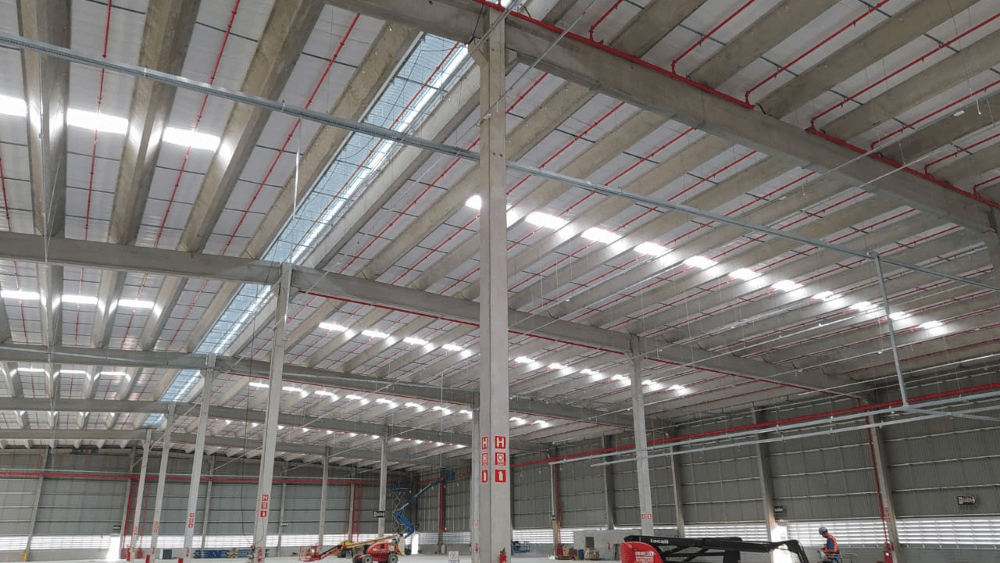In recent years, the growing concern for energy efficiency and sustainability has led companies to adopt innovative natural lighting and ventilation solutions. These methods not only promise a significant reduction in operational costs but also play a crucial role in minimizing environmental impact.
Natural lighting, which takes advantage of sunlight, and natural ventilation, which utilizes external airflow to cool indoor spaces, have become increasingly popular. These solutions allow for a substantial reduction in reliance on artificial energy sources such as electric lighting and air conditioning systems, resulting in significant energy savings and contributing to the preservation of natural resources.

A remarkable example of this trend is a Paraná-based company specializing in natural lighting and ventilation solutions, which has seen an impressive 30% increase in demand for its products over the past two years. This growth reflects a rising awareness of the benefits of these practices and a desire among companies to adopt more sustainable approaches.
Beyond economic benefits, these solutions also create a healthier and more pleasant work environment. Natural lighting enhances employees’ well-being and can even boost productivity, while natural ventilation helps maintain indoor air quality and reduces the need for artificial climate control systems.
With ongoing pressure to reduce carbon footprints and embrace greener practices, the demand for natural lighting and ventilation solutions is expected to continue growing. Companies that invest in these technologies not only save money in the long run but also demonstrate a commitment to environmental preservation, aligning with global sustainability and corporate responsibility trends.
The recent surge in the adoption of natural lighting and ventilation solutions is a clear sign of a transformation in corporate mindsets. More and more companies are recognizing and valuing the long-term benefits of these technologies, not only in terms of cost savings but also in their positive impact on the environment and employee well-being.
Cássio Pissetti, Technical and Commercial Director at Engepoli, illustrates this trend by highlighting an innovative solution developed by the company: “We are talking about a type of skylight, often called a dome, with a lower surface composed of microprisms. These small prisms act like magnifying lenses, optimizing the entry of natural light into the space.”
This microprism skylight technology is designed to maximize the efficiency of natural lighting. By refracting light more effectively, it ensures a more uniform and intensified distribution of sunlight, reducing the need for artificial lighting. The impact of this innovation is significant: according to Cássio Pissetti, companies adopting these advanced solutions can experience an astonishing reduction of up to 94% in electricity consumption related to lighting.
This level of savings not only reflects more efficient energy resource management but also contributes to lowering carbon emissions associated with electricity generation. Additionally, improved ambient lighting quality can have beneficial effects on employee productivity and comfort, creating a more pleasant and stimulating work environment.
The increasing adoption of these technologies signals a fundamental shift in business priorities, where sustainability and energy efficiency are becoming increasingly important criteria in strategic decision-making. With results demonstrating substantial cost savings and additional benefits, it is foreseeable that more companies will follow this example and integrate natural lighting and ventilation solutions into their future projects.
From a practical standpoint, adopting natural lighting solutions can lead to substantial savings for companies. For instance, a business that previously spent R$100,000 per month on artificial lighting could reduce this expense to less than R$10,000 by incorporating natural lighting technologies. This significant cost reduction not only eases operational budgets but also reflects more efficient energy resource management.
Natural lighting offers advantages beyond simple financial savings. It provides significant benefits for the health and well-being of employees and clients. The presence of natural light in the workplace has been linked to increased productivity, reduced stress, and a more comfortable and healthy environment.
Cássio Pissetti, Technical and Commercial Director at Engepoli, highlights an important aspect of this innovation: “Our solution provides 80% light transmission while preventing excessive heat buildup in the space.” This balance is crucial because while natural light can enhance visibility and visual comfort, heat generated by artificial sources can make the environment uncomfortable and increase demand for air conditioning. The ability to transmit a high amount of light without adding extra heat helps maintain a more stable and pleasant indoor temperature, reducing the need for artificial cooling.
Beyond the direct benefits for the workplace, natural lighting also contributes to environmental sustainability by reducing a company’s carbon footprint through lower electricity consumption. By integrating these solutions, businesses not only save financial resources but also promote a healthier and more sustainable environment, aligning with global trends in environmental responsibility and employee well-being.
Maintaining the right balance in natural lighting is essential for creating a comfortable and productive work environment. Excessive exposure to natural light can lead to uncomfortable conditions, resulting in visual fatigue and exhaustion among employees and visitors. To prevent these issues, the company employs specialized software that precisely calculates the ideal amount of natural light needed for each space. These advanced systems analyze factors such as solar orientation, light intensity, and room characteristics to ensure an adequate and comfortable distribution of natural light, promoting both efficiency and occupant well-being.
The integration of these technologies represents a significant step toward more sustainable and efficient business practices. The ability to optimize natural lighting not only reduces electricity costs but also minimizes the environmental impact associated with artificial energy consumption. Adopting such solutions demonstrates a commitment to environmental responsibility and technological innovation, aligning corporate operations with best sustainability practices.
As a growing number of companies begin to recognize and take advantage of the diverse benefits of natural lighting, this trend is expected to continue expanding. The intelligent use of natural light not only contributes to a greener and more sustainable future but also promotes a more economically viable approach for the Brazilian business sector. The widespread adoption of these technologies could lead to a more sustainable landscape, with healthier work environments and a significant reduction in companies’ carbon footprints.

